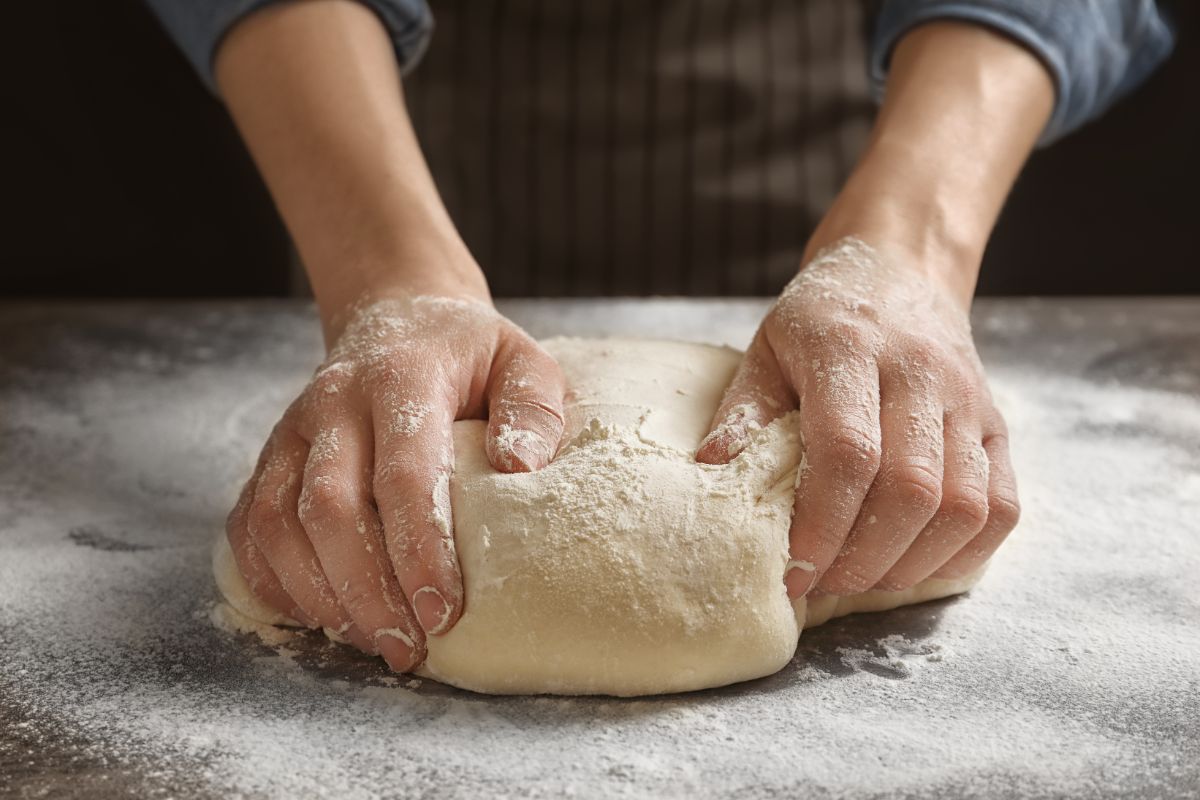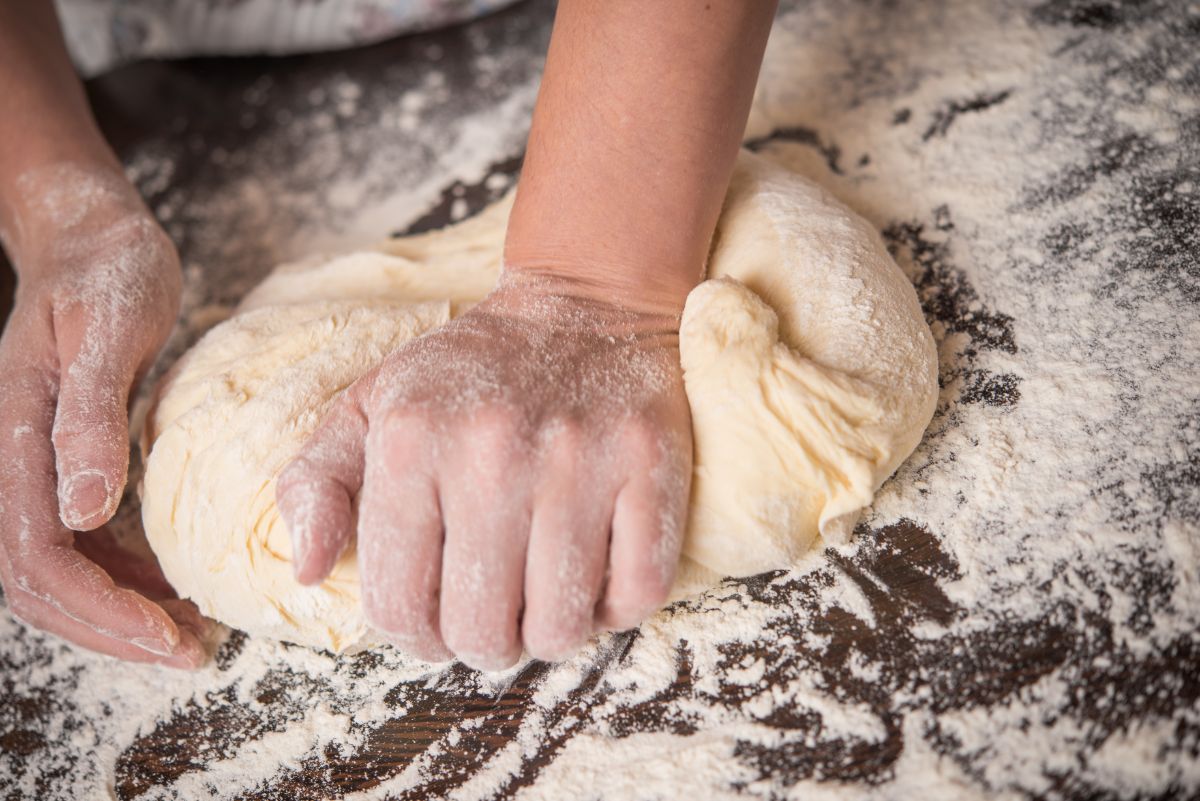Everyone loves pizza. It can be the perfect treat or the main course of a meal. If you are tired of paying high prices for delivery pizza and have little interest in frozen food, you may want to make your own at home.

However, there are differences between making pizza and baking bread.
One question you may have is “Should you knead pizza dough?” The answer depends on the circumstances. Some pizza doughs need to be kneaded, but others do not.
What Is No-Knead Pizza Dough?
If you want to make pizza with dough that requires no kneading at all, the trick is in the recipe. While there are numerous recipes to choose from, the ingredients work together to create the perfect dough.
After you have combined the ingredients, the dough must rest. The recipe should specify room temperature, for up to 24 hours. Before you allow your dough to rest, it should be covered in a plastic wrap.
The dough will be ready to shape and bake. If you want delicious pizza without all the added work of kneading, this is an option you should try.
Some Recipes Require Kneading
Not all pizza dough recipes include the no-kneading option. Similar to bread dough, the specific details will vary depending on the recipe. If the recipe you choose states the dough must be kneaded, do not skip this all-important step.
Allowing the dough to rest, and then kneading it properly, will help the dough become firm. This firmness is necessary when you want the right texture for your pizza crust.
While it is possible to knead pizza dough in a food processor or with a standing mixer, kneading by hand will produce the best results.
While it is more fun to do it yourself, it will also help you create the perfect dough. You will be able to feel its consistency and do some little tests to be sure it is ready to bake.
You will need to look at the recipe you are using to see how long to knead the dough. If you do not knead it long enough, the dough will not develop properly.
The finished product will be hard, too dense, and flat. The results of over-kneading are not as serious, but it still should be avoided. If you are concerned about this issue, make sure you do not use too much flour.
How long is appropriate for kneading pizza dough? It varies from recipe to recipe, but much depends on you. If you are experienced with kneading the dough and can work quickly, it may not take more than 5 minutes. For less-experienced bakers, kneading can take 10 minutes or a little longer.
How Will You Know The Dough Is Kneaded?

Some basic tests will help you see if the dough is completely kneaded and ready to be baked:
Knead the dough until it loses its stickiness
The dough should be satiny and smooth. When you press it gently with your fingers, it should spring back easily.
Try the windowpane test
Start by removing a small amount of dough. Flatten it, and start stretching it. Continue stretching it until it becomes thinner and thinner.
If the gluten has developed properly, the dough will have an elastic feel and texture. Stretching should produce a thin membrane.
You will be able to easily see through it. You should be able to stretch it very thin without the dough breaking. If you have achieved these results, your pizza dough has passed the windowpane test. You have succeeded with kneading your pizza dough!
Tips For Creating The Perfect Pizza Dough
If you do not have good results when you check your dough, it is possible that you may have made some mistakes.
Keep these tips in mind when you want to create the perfect dough for your pizza.
- Always use the correct type of yeast. A good pizza recipe will call for quick-rise yeast. Do not attempt to substitute a different type of yeast if you want good results.
- Make sure the water is at the correct temperature. Too-cool water will not activate your yeast, and too-hot water can actually kill your yeast so it is useless. An easy approach is to check the water temperature with a thermometer.
- When you are kneading your dough, only use the amount of flour you really need. If too much flour is used during the kneading process, it will ruin the texture of the dough. Begin with a very small amount, and add more if it becomes necessary.
- Too much flour on the work surface can also affect the dough. Only use the amount needed to stop the dough from sticking to the work surface.
There is a simple way to avoid over-flouring your dough. Instead of using flour, spray a small amount of non-stick cooking spray on the work surface.
This tip will make it easy to knead your dough without it sticking to the surface, and it will also keep excess flour out of your dough. The only flour that will be in the dough will be the flour from the recipe.
When the dough is ready to bake, it will have the perfect texture and consistency.
Kneading Or No-Kneading: Does It Matter?
Whether you choose a no-knead pizza dough recipe or one that calls for kneading, you can have perfect results every time. It is basically a matter of personal preference. While kneading takes more time and work, there will not be any significant differences.
The trick to great results is to follow the recipe from start to finish.
If you do not have the time to knead the dough, or prefer to avoid this step, take the sensible approach and choose a recipe that does not require it. Kneading dough can be fun, but you can be a super baker and have excellent results even if you avoid it.
If this is your first attempt with homemade pizza, you do not need to be intimidated. There are plenty of recipes available, with both kneading and no-kneading options.
Not only can you save money and avoid preservatives by making your own, but you will also see homemade pizza tastes better, too. You will not find a nicer treat for your family than hot, freshly-baked pizza that you prepared from scratch and baked in your own oven.
